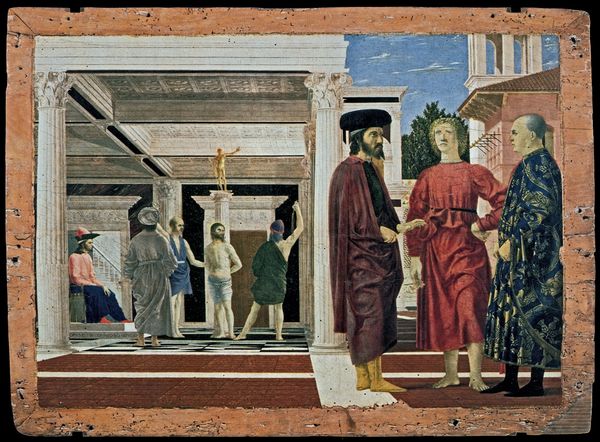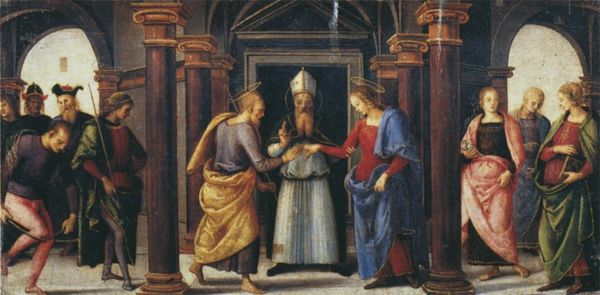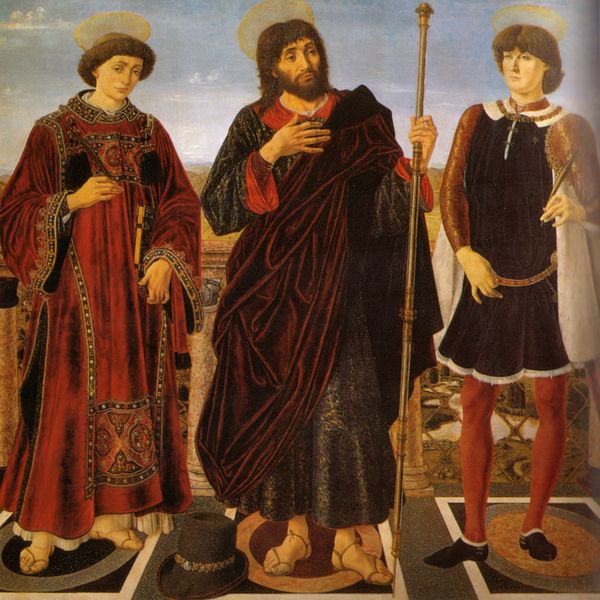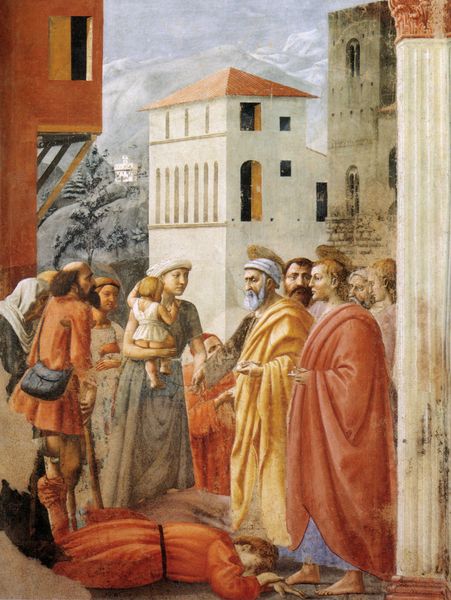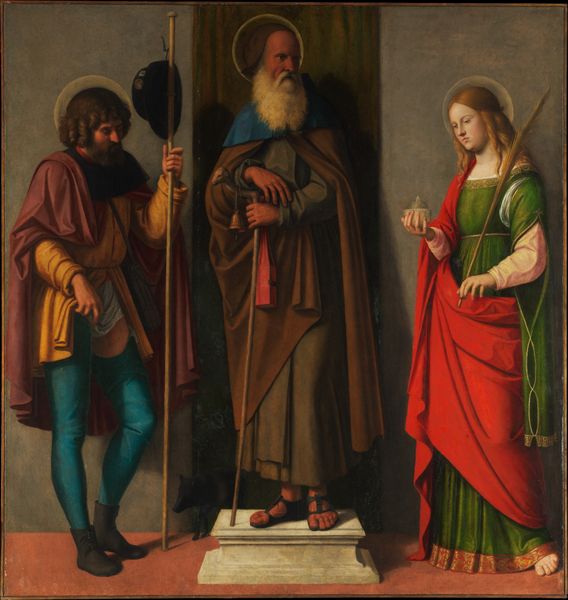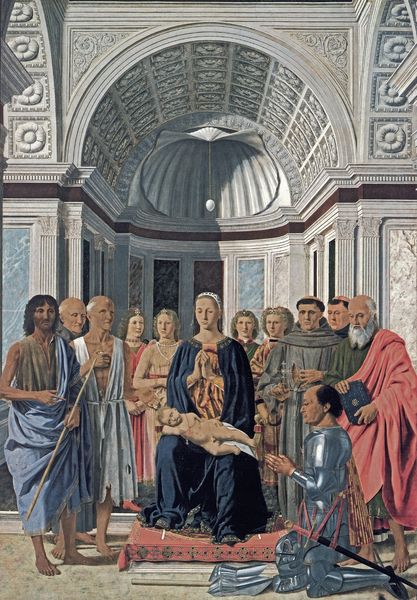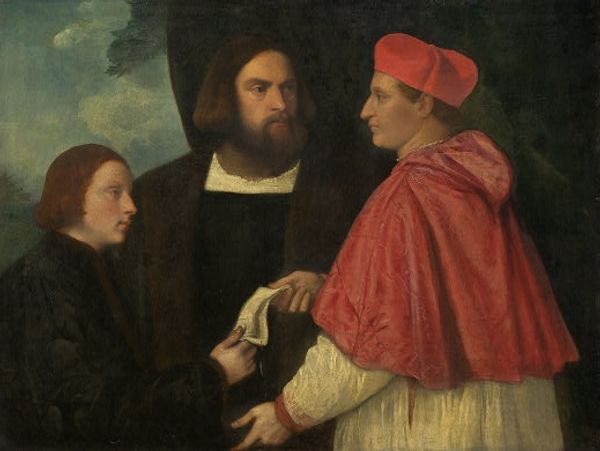
The Flagellation of Christ (detail) 1464
0:00
0:00
pierodellafrancesca
National Gallery of the Marches (Palazzo Ducale di Urbino), Urbino, Italy
panel, painting, oil-paint
#
panel
#
narrative-art
#
painting
#
oil-paint
#
perspective
#
figuration
#
oil painting
#
christianity
#
italian-renaissance
#
early-renaissance
Dimensions: 59 x 81.3 cm
Copyright: Public domain
Curator: The serene stillness of Piero della Francesca's "Flagellation of Christ," painted around 1464, is almost unnerving. This oil-on-panel work currently resides in the National Gallery of the Marches in Urbino, Italy. Editor: The stillness is certainly striking. There's a pervasive sense of geometric precision. Note how the foreground figures are rigidly separated from the flagellation scene by the architecture—a fascinating study in contrasting planes. Curator: Indeed. That division underscores a central enigma. While Christ's flagellation occurs in the background, three figures dominate the foreground. These are thought to be linked to the Duke of Urbino and are interpreted as representations of innocence, fortitude, and faith in relation to political intrigue. Editor: Interesting. The use of orthogonal lines converging towards a vanishing point—noticeable on the pavement and the ceiling of the flagellation chamber—create a sense of rationality. It is further contrasted against the palpable anguish inherent in the flagellation scene. What purpose might such formal construction have served in depicting religious drama? Curator: Renaissance patrons often utilized biblical stories for political propaganda. The flagellation—Christ's suffering—is equated with the Duke's unjust political situation. By association, it positions him as an innocent, virtuous leader. Editor: But even beyond symbolism, the calculated light that seems to drape evenly across all figures, combined with the precise rendering of textures—the marble columns, the clothing—draws the eye from the gruesome flagellation to the seemingly unaffected observers. It's almost like Piero wants us to study forms and colors just as much as interpret the depicted suffering. Curator: That focus is not entirely unusual for Renaissance Humanism. The emphasis on ideal forms, classical references, and perspectival harmony aimed to demonstrate the power of reason, the triumph of human order over earthly chaos. So, yes, the forms hold weight in meaning as well. Editor: That balance he strikes—of geometric perfection and narrative complexity—creates tension within the image. It’s not merely an emotionally evocative scene; it's also an intellectual exercise. Curator: Precisely. Piero invites the viewer into a realm where theological drama intersects with political assertion, using mathematics as its common language. Editor: An extraordinary commingling of faith, power, and the cool precision of artistic design—a glimpse into the Early Renaissance mind.
Comments
No comments
Be the first to comment and join the conversation on the ultimate creative platform.
